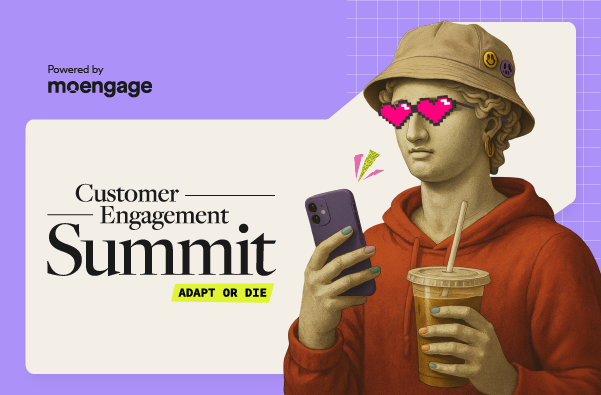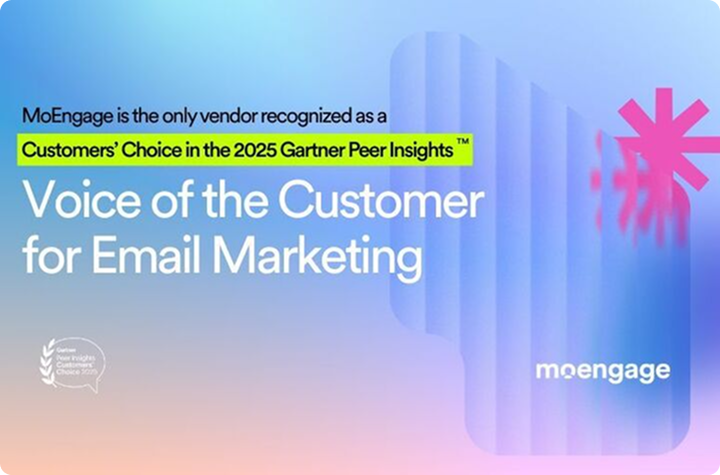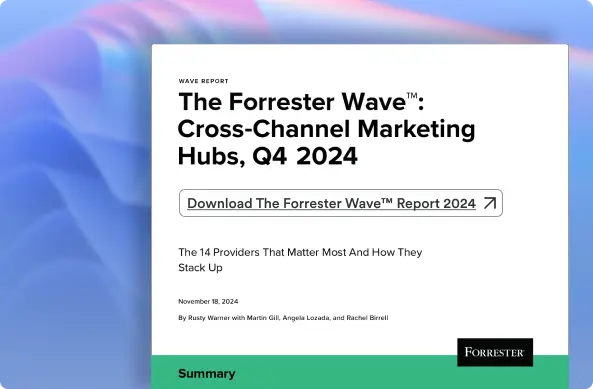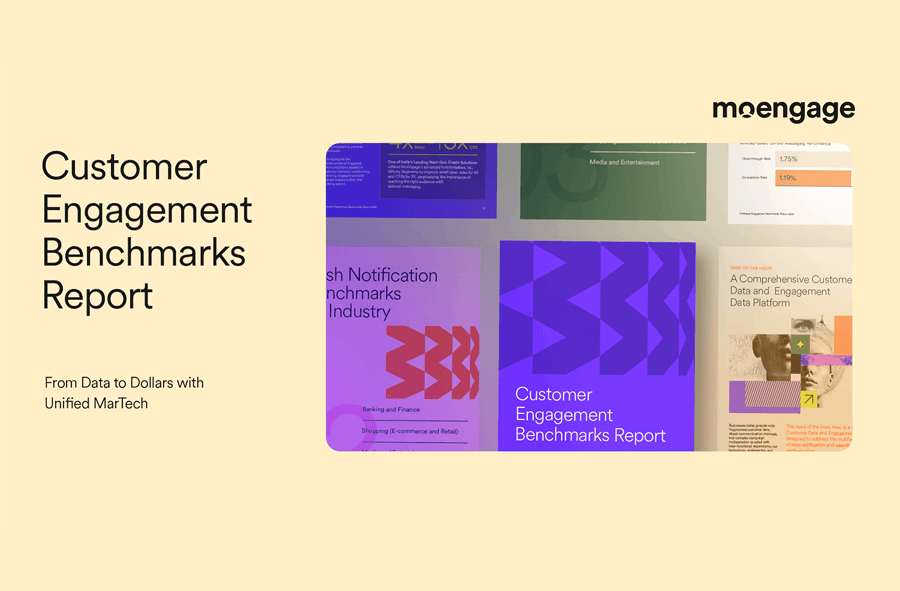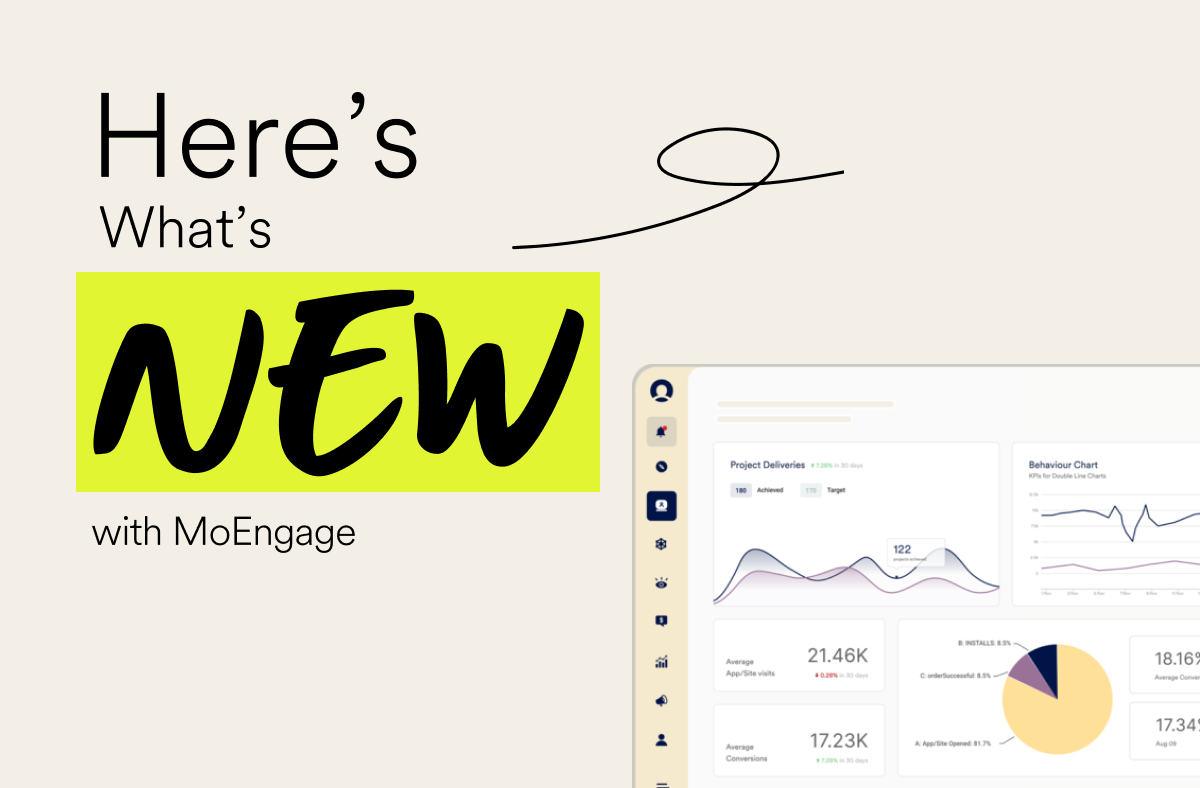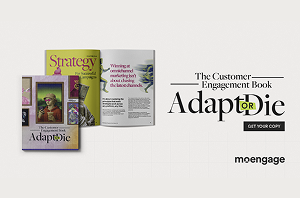Deep Dive into Customer Loyalty: Strategies from Shaadi.com, IndiGo, Yum! Brands Zepto & Gameskraft
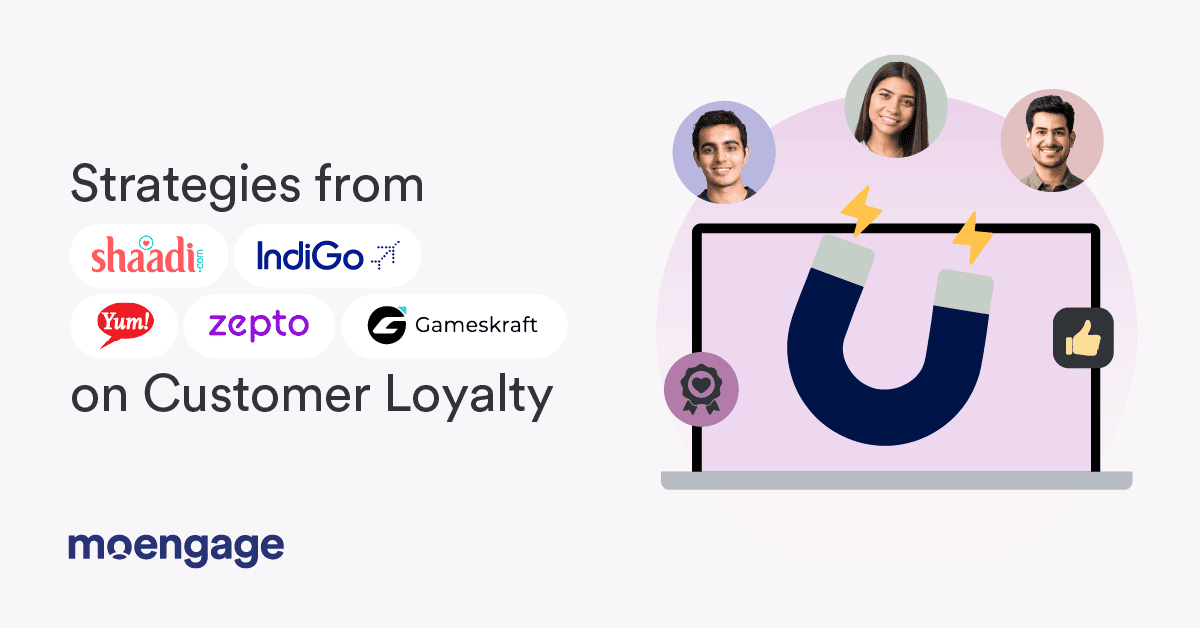
Reading Time: 11 minutes
In today’s market, winning a customer has never been harder—or more expensive. Customer acquisition costs have soared by 60% over the past five years, yet expectations haven’t slowed down. In fact, they’ve intensified.
While companies collect vast amounts of customer data, they often fail to utilize it effectively. This disconnect leads to missed opportunities in creating meaningful customer experiences.
Compounding the issue is the growing concern over data privacy. A study by KPMG found that 86% of consumers are increasingly worried about data privacy, and 40% don’t trust companies to use their data ethically.
This tension—between delivering truly meaningful, data-driven experiences and respecting customer privacy—was the core of the conversation when leaders from Gameskraft, Shaadi.com, IndiGo, Yum! Brands and Zepto came together for a candid panel discussion.
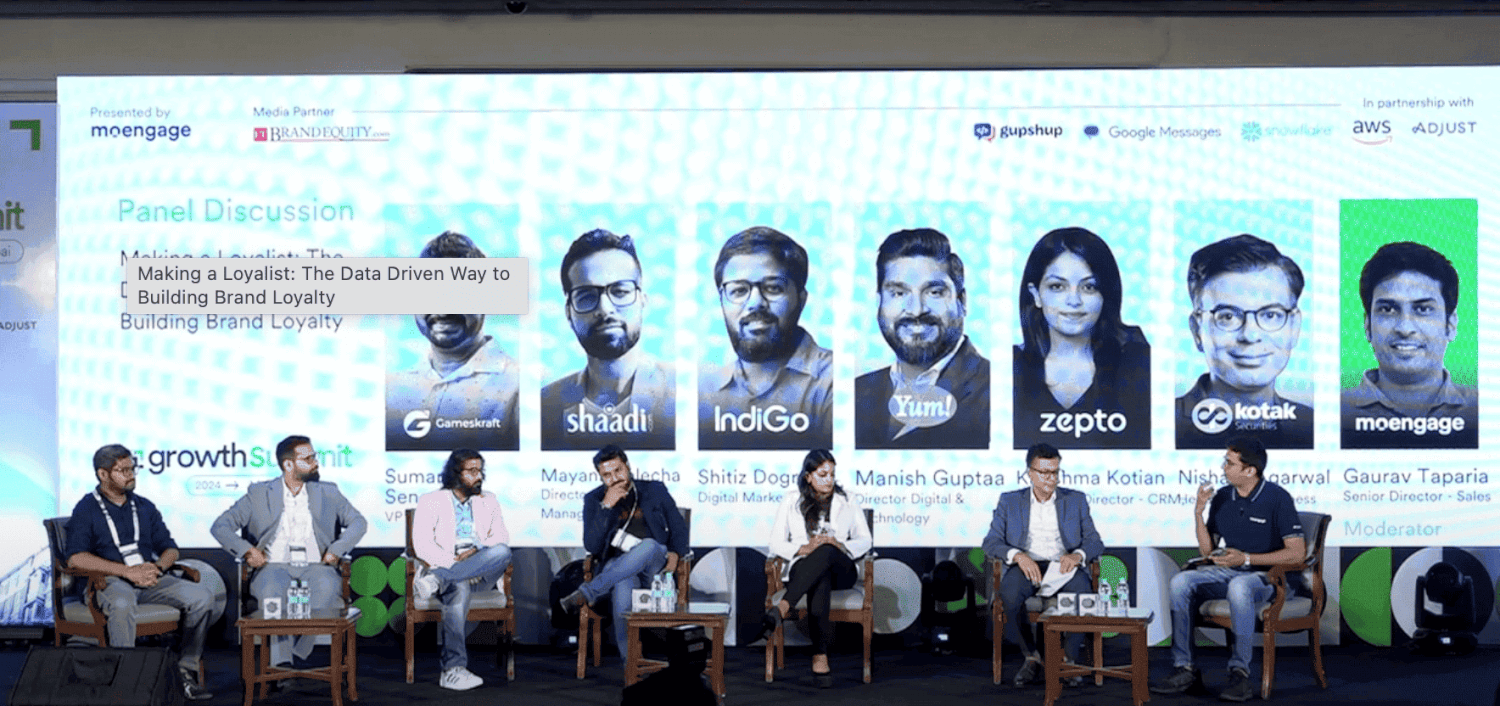
How are the most innovative brands closing this gap? How are they using data to deepen loyalty without crossing the line into creepiness? And most importantly—how can you do the same?
This blog dives deep into that conversation, uncovering the insights, strategies, and real-world practices they shared during the panel.
Building a Data-Driven Customer Loyalty Strategy: Insights from Industry Leaders
As we shift toward understanding how brands are using first-party data to build more meaningful connections, we can explore how this data drives customer loyalty. Industry leaders are finding new ways to leverage customer interactions and touchpoints to redefine loyalty strategies across various sectors. This marks the next step after identifying first-party data as the key to customer insights.
Redefining Loyalty Across Industries
Customer loyalty is no longer a one-size-fits-all concept. Across industries, the definition of loyalty varies significantly, and brands must adjust their strategies accordingly. Here’s how different sectors define loyalty:
- Social Media Platforms: Loyalty is measured by multiple daily visits and consistent engagement.
- Banking Applications: Monthly engagement, such as checking accounts or credit card activity, signals loyalty.
- Travel Platforms: A loyal customer may make 2-3 bookings annually, signifying ongoing engagement.
- Quick Commerce: Loyalty is reflected in weekly or bi-weekly purchases.
- Matrimonial Services: Loyalty is time-bound, related to specific lifecycle stages (e.g., engagement period).
This variance creates an interesting challenge for marketers trying to benchmark loyalty metrics against industry standards. For Shaadi.com, the concept takes on an entirely different dimension.
“For us, it’s slightly more complicated at Shaadi. A loyal user or core user—how would we want to identify them? It’s a very lifecycle-based decision. You come on the platform when there is a need, and you want to exit the platform as soon as possible. So our loyalties have to be very time-bound,” explains Mayank Valecha, Director of Product Management at Shaadi.com.
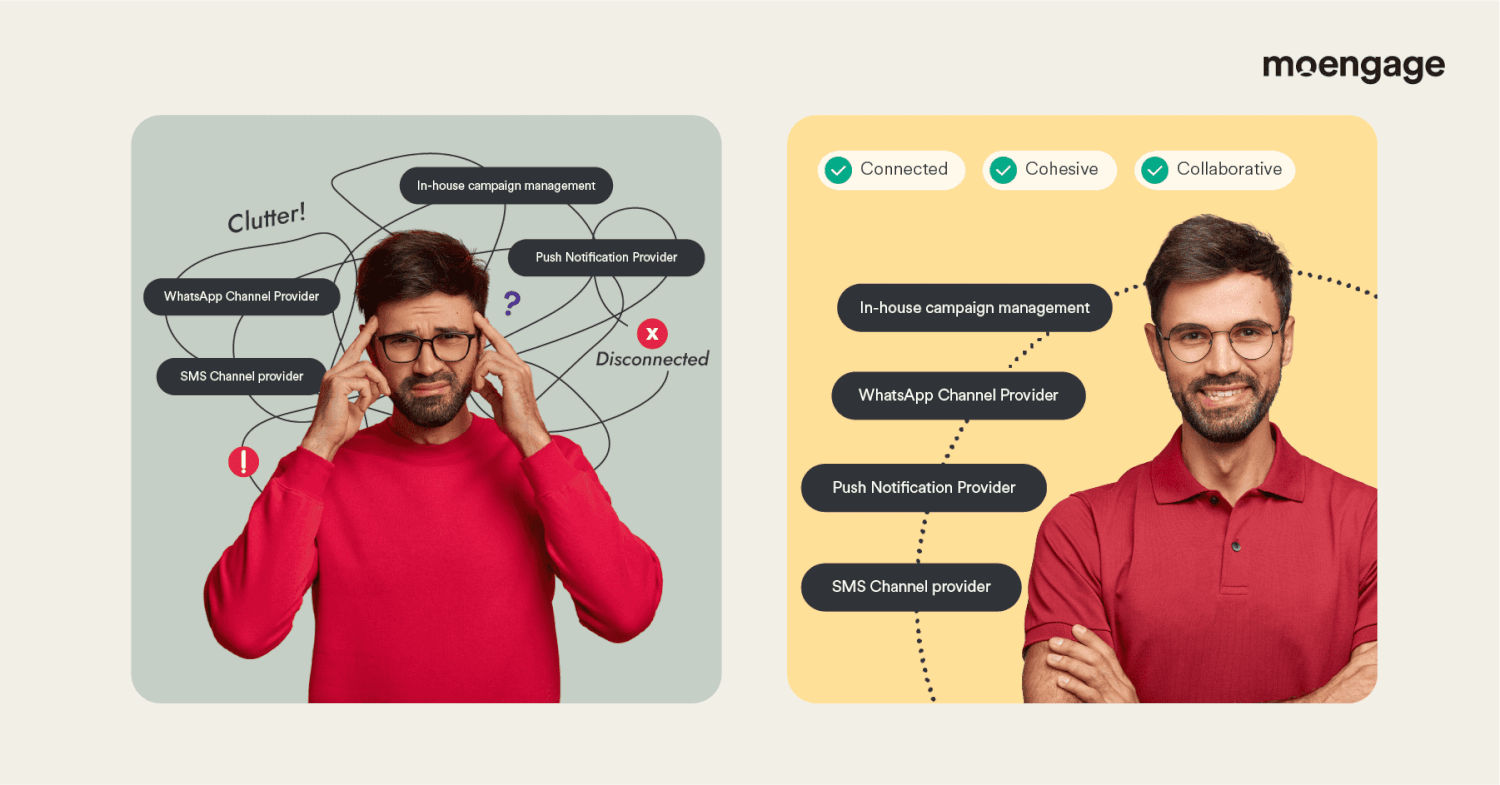
Transactional vs. Emotional Loyalty
Brands typically approach loyalty in two ways:
- Transactional Loyalty
- Driven by rewards, discounts, and tangible benefits.
- Easier to disrupt with competitive offers.
- Measured by purchase frequency and monetary value.
- Emotional Loyalty
- Built on trust, brand affinity, and emotional connection.
- More resilient to competitive pressures.
- Leads to brand advocacy and higher lifetime value.
When Loyalty Is a Misnomer
In some industries, the traditional concept of loyalty can be misleading. For example, in regulated sectors like securities or niche markets with limited choices, customer retention isn’t driven by preference but by necessity. Here, reducing friction and improving experience quality often takes precedence over cultivating loyalty.
This is especially true when brands dominate their market and customers have no real alternative. In these cases, customer behavior leans more toward convenience than genuine loyalty.
The Decline of Third-Party Cookies and the Rise of First-Party Data
Now, let’s talk about the changing landscape of data collection. Building on the concept of loyalty, first-party data is fast becoming the cornerstone of customer strategies, especially as third-party cookies continue to fade from relevance. Let’s dive into how brands are adapting their data strategies in response to this paradigm shift.
The Declining Value of Third-Party Data
The marketing landscape has seen a shift from third-party to first-party data, driven by both regulatory pressures and changing consumer behavior. Here’s how third-party cookies are becoming less effective:
- 41% of marketers report reduced effectiveness of third-party cookies (IAB, 2023).
- Major browsers like Google Chrome are blocking third-party cookies by default.
- Increased regulatory restrictions (e.g., GDPR, CCPA) limit cross-site tracking.
As consumer concerns over privacy heighten, third-party data is less reliable and harder to obtain. In response, brands are turning to first-party data—information they collect directly from customer interactions on their platforms.
The Rise of Owned Customer Data
More brands are now focused on capturing owned customer data, directly from consumer interactions. Here’s why first-party data is a game-changer:
- It’s more accurate: First-party data reflects what people actually do with your brand, not just what they click on across the internet.
- It’s safer: Since the data comes directly from customers, it’s easier to comply with privacy regulations like GDPR or CCPA.
- It helps you personalize: The more you know about your customers, the better you can tailor their experience, creating a stronger, more personal connection with them.
As Sumanta Sengupta from Gameskraft puts it, “Data is created by the actions that players take on our system. Understanding this behavior unlocks real insights that can drive deeper engagement.”
How Leading Brands Collect First-Party Data
Different industries are adopting innovative approaches to gather first-party data:
- Gaming Platforms: Track in-game behavior, progression, and feature engagement.
- Quick Commerce: Analyze purchase patterns, product preferences, and delivery habits.
- Travel Companies: Monitor booking habits, destination preferences, and add-on services.
- Food Delivery Services: Identify meal preferences, group sizes, and cuisine types.
This collection of data is often done across multiple channels to create a comprehensive customer profile.
Beyond Website Behavior: Omnichannel Data Collection
Effective first-party data strategies extend beyond digital interactions. Brands are collecting data from multiple channels to gain a full picture of the customer journey:
- In-store/offline interactions (e.g., purchases, returns).
- Customer service touchpoints (e.g., support calls, chat interactions).
- Social engagement signals (e.g., likes, shares, comments).
- Voice of customer feedback (e.g., surveys, reviews).
- Product usage telemetry (e.g., feature adoption, usage frequency).
The Ethical Foundation: Transparent Data Collection
Transparency is key when collecting first-party data. Brands must establish clear, ethical guidelines:
- Clear communication on data usage.
- Explicit purpose for each data point captured.
- Consumer control over their data, with easy access to opt out.
- A value exchange model that benefits the consumer (e.g., personalized experiences, rewards).
By building trust through transparency, brands not only comply with regulations but also foster long-term loyalty.
As Sumanta Sengupta from Gameskraft puts it, “Data is created by the actions that players take on our system. Understanding this behavior unlocks real insights that can drive deeper engagement.”
Turning Data Into Actionable Insights
As we discussed so far, it’s one thing to collect first-party data; it’s another to turn that data into actionable insights. So, how can brands do that?
Segmentation Strategies That Drive Results
After gathering first-party data, the next step is to segment the audience in ways that lead to more personalized and relevant interactions. Leading brands use various segmentation approaches:
- Behavioral Segmentation:
- Use RFM (Recency, Frequency, Monetary) analysis to identify high-value customers based on their past behavior.
- Predict customer behavior and predict future engagement.
- Engagement-Based Clustering:
- Distinguish between power users and casual users.
- Analyze feature affinities and time-of-day preferences.
- Contextual Segmentation:
- Account for life stage, seasonal relevance, and location-based needs.
- Consider device preferences and platform choices.
Sengupta highlights how Gameskraft uses this to understand user behavior: “We identified that some users want to explore products while others dive straight into gameplay. Categorizing them correctly allows us to offer more relevant content.”
Finding the Signal in the Noise
One of the most significant challenges in working with data is distinguishing between correlation and causation. Effective data interpretation requires advanced analysis approaches like:
- A/B testing to validate causal relationships.
- Cohort analysis to isolate behavior patterns.
- Machine learning models to identify complex relationships and predict future behavior.
Misinterpretations can often arise, such as:
- Confusing browsing behavior with buying intent.
- Overlooking the influence of external factors that may be affecting behavior (e.g., weather, events).
Understanding the true drivers behind data helps brands make more informed, data-backed decisions.
Connecting Multiple Data Sources for a Complete Customer View
Modern customer data platforms (CDPs) allow brands to connect and consolidate data from various sources into a unified customer profile. This holistic view is critical for:
- Building comprehensive customer profiles that include demographic and behavioral data.
- Aggregating transactional data to better predict future purchases.
- Incorporating campaign response data to optimize future marketing efforts.
Shaadi.com’s Mayank Valecha shares that their biggest challenge isn’t collecting too little data, but too much data. “We have so much data, but it’s about cutting out the noise and finding the right insights.”
The Human Element: Contextualizing Data Insights
Data is powerful, but it’s not everything. Sometimes, it’s about the context. Sure, you can see that a customer buys from you every month, but why? What motivates them? So, the effective use of first-party data requires:
- Qualitative research to get deeper insights beyond the numbers.
- Voice of customer programs to understand emotional context.
- Ethnographic research to uncover unspoken needs.
- User testing to validate hypotheses.
By combining quantitative and qualitative data, brands can build more accurate customer profiles and create personalized experiences that resonate on a deeper level.
Creating Personalized Experiences That Drive Loyalty
Finally, once data has been collected, interpreted, and segmented, it’s time to take action. Brands are now using personalization to turn insights into real-world customer experiences, creating loyalty in ways never before possible.
From Mass Marketing to Individualized Experiences
Personalization has evolved through four distinct phases:
- Level 1: Segmented Marketing
- Basic demographic targeting and persona-based messaging.
- Limited customization and targeting options.
- Level 2: Behavioral Triggers
- Event-based communications like cart abandonment reminders.
- Recommendations based on browsing history.
- Level 3: Predictive Personalization
- Anticipating customer needs and offering proactive product recommendations.
- Suggesting the next-best-action for each individual customer.
- Level 4: Contextual Hyper-Personalization
- Customizing content and offers based on real-time data and situational awareness.
Real-World Personalization Examples
Leading brands have mastered the art of personalized experiences, such as:
- Zepto’s Intelligent Replenishment System: Zepto predicts when a customer will run out of essential items (like eggs) based on their past purchase patterns. “It’s like when your mom reminds you about something at the right time, and the brand does the same,” says Karishma Kotian, Associate Director of CRM at Zepto.
- IndiGo’s Content-Led Personalization: IndiGo noticed search patterns related to becoming a pilot and responded with educational content on how to become a pilot, which boosted engagement and trust.
- Yum! Brands’ Daypart Personalization: Yum! Brands tailored offers based on meal time, like breakfast combos in the morning and family meal packages for weekends.
Going Beyond Products
Personalization isn’t just about the products you recommend. It’s about the whole experience. Some brands personalize:
- The interface: Customizing websites or apps to show people the things they’re most likely to engage with.
- The service: Offering a high-touch, concierge-like experience for loyal customers or a more self-service approach for others.
- The timing: Offering discounts or recommendations based on when someone is likely to make a purchase, whether it’s the morning, afternoon, or evening.
Measuring Personalization Impact
Brands track the effectiveness of personalization strategies through key metrics:
- Engagement rates and conversion rates.
- Customer satisfaction and retention rates.
- Average order value growth and customer effort scores.
As personalization strategies mature, so does the ability to craft seamless customer journeys that resonate on a personal level.
The Technology Behind Effective Customer Engagement
Now that we’ve talked about how personalized experiences can help build stronger customer loyalty, it’s time to dive into the technology that makes all of this possible. Creating these meaningful, personalized interactions across various touchpoints requires the right tools—and that’s where platforms like MoEngage come in
How Customer Engagement Technology Has Evolved
Before we dive into MoEngage and its offerings, let’s take a step back and look at how customer engagement technology has evolved. This will help us appreciate how far we’ve come and why modern platforms are so important in delivering the personalized experiences customers expect.
The Early Days: Channel-Specific Tools
Initially, businesses relied on separate tools to engage with customers on different channels. Each tool had its own purpose, and they often didn’t work together. Brands might have used:
- Email marketing tools for newsletters and promotions.
- SMS services to send reminders and offers.
- Push notifications for mobile app engagement.
The challenge with these tools was that they operated in silos, making it hard to get a unified view of the customer or ensure a consistent experience across different channels.
Enter Multi-Channel Marketing
As digital marketing grew, the need for a more cohesive approach became apparent. Companies started using multi-channel marketing platforms that allowed them to manage interactions across different channels from a single platform. This allowed for:
- Better campaign management across email, SMS, and app.
- Basic audience segmentation based on user demographics and behaviors.
- Some level of customer journey orchestration, though it was still a bit disjointed.
While multi-channel platforms solved some problems, they still weren’t fully integrated, and brands struggled to provide the personalized experiences that customers wanted.
The Rise of Integrated Customer Engagement Platforms (CDEPs)
Now, we’re in the era of Integrated Customer Data and Engagement Platforms (CDEPs). These platforms bring all of a brand’s customer interactions together in one place, enabling personalized, real-time engagement. Some of the features that make these platforms stand out include:
- Unified customer profiles that bring together data from all touchpoints.
- Real-time decision-making powered by advanced AI and machine learning.
- Privacy compliance built into the platform, ensuring that brands can stay compliant while delivering personalized experiences.
This is where MoEngage shines. It’s a platform built for the modern marketing world, allowing businesses to deliver meaningful engagement at scale while ensuring privacy and data security.
MoEngage: Powering Personalized Customer Engagement
MoEngage brings the power of an integrated customer engagement platform to life. It’s designed to make it easier for businesses to create and execute personalized marketing campaigns across channels, all while collecting and utilizing customer data in real-time.
Cross-Channel Engagement with Personalization at Scale
The real beauty of MoEngage lies in its ability to allow brands to engage customers across multiple channels—email, SMS, push notifications, mobile apps, and more—while still delivering a personalized experience. Here’s how it works:
- Cross-Channel Campaign Management: MoEngage lets you manage campaigns across multiple channels from one platform. Whether you’re running an email marketing campaign or targeting users with push notifications, you can ensure that the message is tailored to the individual and delivered via the channel they engage with most.
- Unified Customer Profiles: The platform gathers data from every interaction a customer has with your brand, from website visits to app usage to email opens. This gives you a complete picture of each customer and allows you to deliver highly relevant content across all channels.
- Behavioral Segmentation: With MoEngage, you can segment your audience based on their behavior. For example, if someone has browsed a certain category of products on your site or abandoned a cart, you can trigger a personalized campaign that addresses their specific interest or action.
Real-Time Decisioning and Predictive Analytics
Another key feature of MoEngage is its ability to make real-time decisions based on customer behavior. Using Merlin AI, MoEngage helps you predict what actions customers are likely to take next and engage them with the right content at the right time. Here’s how it helps:
- Predictive Insights: MoEngage analyzes customer data to predict future behaviors. For example, if a user has shown interest in a certain product, the platform can predict that they may be ready to make a purchase and send them a personalized offer.
- Personalized Recommendations: MoEngage’s Merlin AI also provides personalized product recommendations, ensuring that customers see the most relevant offers based on their past behavior.
- Churn Prevention: By analyzing patterns in customer activity, MoEngage can identify when customers are likely to disengage and trigger retention campaigns before it’s too late.
Privacy and Data Security Built-In
Privacy is a big concern for both customers and businesses today. MoEngage takes this seriously by embedding privacy compliance into its platform. Some of the key privacy features include:
- Privacy-by-Design: MoEngage is designed to be fully compliant with global data privacy regulations such as GDPR and CCPA, ensuring that your customer data is protected and used responsibly.
- Consent Management: MoEngage allows you to manage customer consent for data collection and usage, ensuring that customers have control over their data and are fully aware of how it’s being used.
- Data Security: The platform ensures robust security measures are in place to protect customer information, giving both you and your customers peace of mind.
Seamless Integration with Your Existing Tech Stack
One of the biggest challenges in adopting new technology is integrating it with your existing systems. MoEngage has made this process as smooth as possible. Here’s how:
- Pre-Built Integrations: MoEngage integrates with many popular tools that brands already use, from CRMs to analytics platforms. This means you can start using MoEngage without having to worry about complex integrations.
- API-First: For businesses that have more specific needs, MoEngage provides an API-first approach, which makes it easy to integrate with any custom-built systems you may have.
- No-Code Campaign Builder: MoEngage’s drag-and-drop interface makes it easy for marketing teams to create and launch personalized campaigns without needing to know how to code.
Scalable and Ready for Growth
MoEngage is built to grow with your business. As your customer base and engagement needs expand, the platform scales effortlessly. Whether you’re a startup or an established enterprise, MoEngage can handle the complexity and volume of your customer engagement needs. Here’s how:
- Campaign Automation: MoEngage automates key customer journey stages, such as welcome messages, product recommendations, and re-engagement, freeing up your team to focus on more strategic tasks.
- Performance Analytics: MoEngage provides real-time insights into how your campaigns are performing. You can easily track metrics like open rates, click-through rates, and conversions, helping you optimize campaigns for even better results.
- Real-Time Monitoring: With MoEngage, you can monitor campaign performance in real-time, making it easy to adjust your strategy on the fly.
Wrapping Up
At the heart of every successful customer engagement strategy is a simple truth: people crave personalized experiences. Today, customers expect brands to understand them and deliver what they need, when they need it. It’s no longer just about transactions; it’s about building relationships. And personalization is the key to creating that connection.
MoEngage makes this possible by providing you with the tools to deliver personalized experiences that give you the power to build deeper, more meaningful relationships with your customers.
So, if you’re ready to take your customer relationships to the next level, personalize with purpose, and build long-term loyalty, MoEngage is here to make it happen. The future of customer loyalty is personalized, and it starts with understanding, respect, and the right technology to make it all come together.
Ready to elevate customer loyalty? Book a free demo with MoEngage today and see how we can help you transform your customer engagement strategy.


